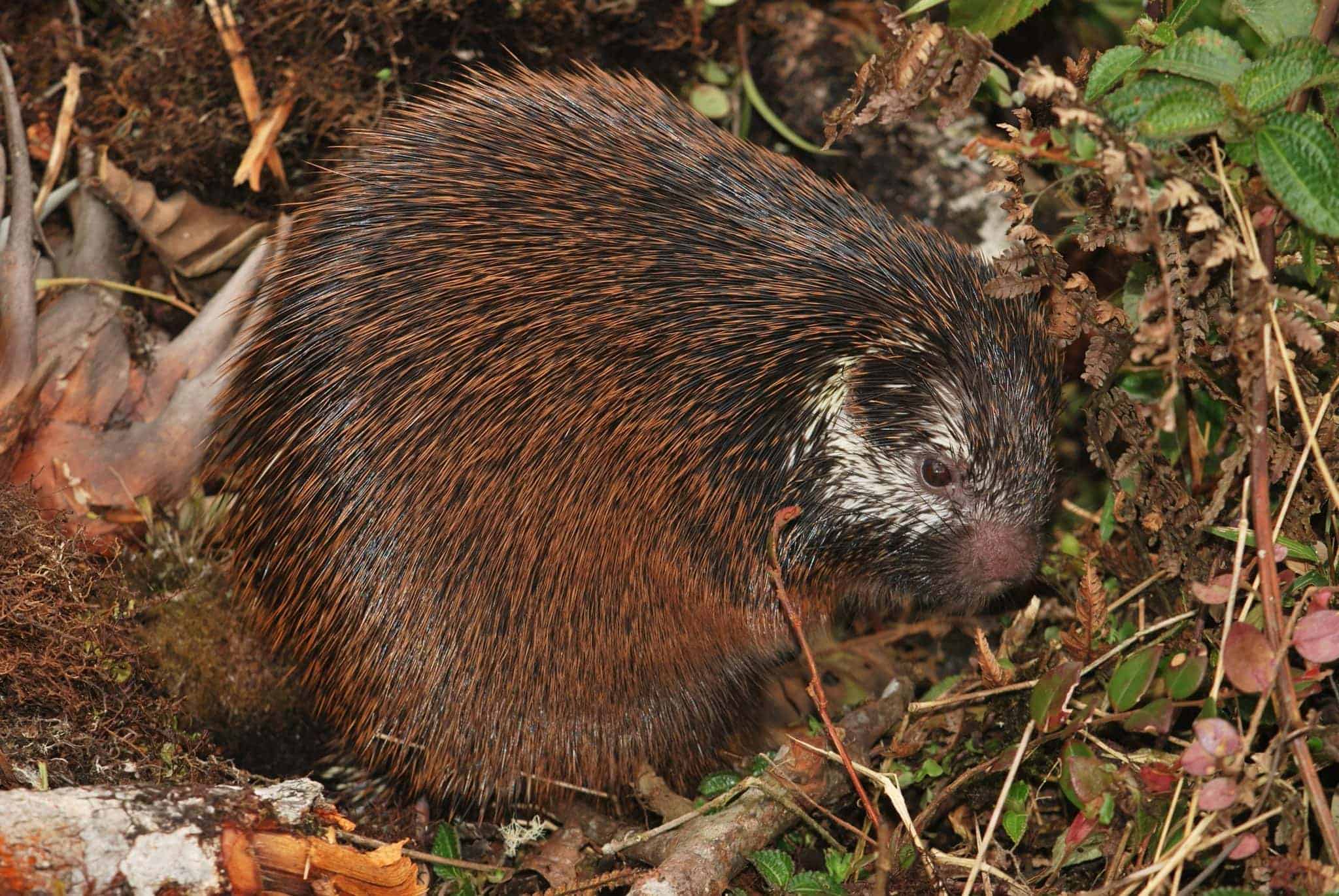Wild albino rodents? Researchers discover albino stump-tailed porcupine
You’re probably familiar with the albino lab mouse, which is a domestic phenotype that resulted from artificial selection and was bred for more than a century. However, albinism can occasionally occur naturally in some wild mammals, including rodents. For the first time, researchers have now provided evidence of the existence of an albino stump-tailed porcupine from the Neotropics.
By Víctor Romero
Albino lab mice have been bred in China, Egypt and Japan for more than a century, where this phenotype was apparently artificially selected. Later, it was used as a mammalian model to demonstrate Mendelian inheritance of genetic traits.
Albinism is an abnormal color phenotype, caused by a genetic mutation that affects the melanin metabolic pathway, the pigment which is responsible for mammalian coloration. Melanin is stored and transported by mammalian melanocytes, i.e. pigmentary cells.
In mice, a plethora of mutations exist, and some of them can induce albinism. Albino individuals totally lack melanin in their skin, hair and eyes; as a consequence, they have red eyes, white fur and pinkish or white skin. In rare cases, it is possible that only the melanosomes associated to the optical systems are unable to develop properly, producing a red eyed, but otherwise normal, phenotype.
In the wild, albinism in rodents is a rare condition, and it has been relatively poorly documented. Rodents represent 40% of the mammals species worldwide, but albino specimens have been reported in less than 2% of the species. No accounts of albinism in Neotropical porcupine species were available, until now.
First account of albinism in Neotropical porcupine
Recently, an albino stump-tailed porcupine was recorded in the vicinity of agricultural land from northern Ecuador. The report was published in a review article in the journal Mammalia.

Generally, the stump-tailed porcupine possesses a body densely covered with quills. But unlike any other South American porcupines, the dorsal quills are blackish in the central portion, with a yellowish or blackish base and reddish-brown banded tips. This coloration gives the animal its scientific name, Coendou rufescens (= the reddish porcupine).

The stump-tailed porcupine has an irregular-shaped spot that covers the throat and chin, which can extend and surround the eyes, cover the forehead, cheeks and the muzzle. However, the albino Ecuadorian specimen referred to in the report lacked the common coloration pattern described above. The individual had blackish to creamy quills, with red eyes and pinkish skin; even its claws lacked the characteristic blackish color.
Albino animals are compromised in several ways
An animal’s coloration pattern can act as camouflage and protect against predators: it is relevant in interspecific (different species) and intraspecific (same species) communication, and in the regulation of some physiological processes.
Therefore it is possible that the occurrence of abnormal colour patterns can compromise the individual’s ability to produce offspring. In fact, a plethora of pathologies associated with albinism are described in humans and domestic mammals.
It is possible that the low frequency of albinos observed in nature and reported in the literature is a consequence of the strong selective pressure against such mutations.
More research into this fascinating topic is necessary to understanding its adaptive relevancy, if it exists.
Read the original article here: